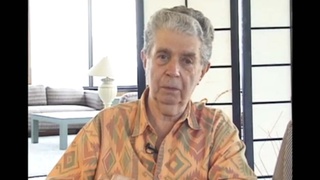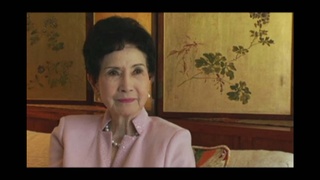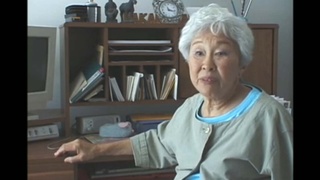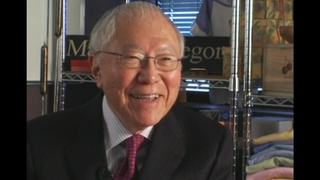Interviews
Memories of my infancy: Japanese 1, Japanese 2… (Spanish)
(Spanish) I was born on the San Nicolás Hacienda, where there was a place for the Japanese community, let´s call it “of the north,” one of many such places. I recall one in Cañete and then another called…well, I don’t remember, perhaps near Trujillo I believe, forgive me, Chiclayo, places where the Japanese settlement was near. The hacienda belonged to a Peruvian, naturally, and what he needed was cheap labor.
And I remember that one of the things that I considered amusing– I don’t know if you will also find amusing what I am about to tell you – I was a child who walked alone, and on Saturdays I remember going to the site where the workers received their pay; then they finished paying the Peruvian workers -- of course by their respective names, Luis Collantes, what I recall, and then when they began to pay the Japanese, they shouted out not a name but rather “Japanese number 1,” “Japanese number 2,” which made me laugh aloud because they [the Peruvian bosses] couldn’t say, for example, Shinki, Hitotuishi, these are difficult names for them to pronounce, and even worse to write. This is the strange thing that I saw when I was a child, I realize now.
Date: September 6, 2007
Location: Lima, Peru
Interviewer: Harumi Nako
Contributed by: Asociación Peruano Japonesa (APJ)
Explore More Videos

Collection of artifacts depicting racial stereotypes influences art
(b. 1939) Japanese American painter, printmaker & professor

Encountering racial discrimination at a public swimming pool
(b. 1923) Nisei from Washington. Resisted draft during WWII.

His testimony has more credibility because of his race
(1922 - 2005) Former U.S. Army counterintelligence officer

Gender discrimination in education field
(1925 - 2018) Nisei educator from Hawai‘i

First impression of New York City during war time
(1915 - 2011) Nisei florist who resettled in New York City after WW II. Active in Japanese American civil rights movement

Not bringing shame to family
(1926 - 2012) Scholar and professor of anthropology. Leader in the establishment of ethnic studies as an academic discipline

Past ties to present situation in Middle East
(1926 - 2012) Scholar and professor of anthropology. Leader in the establishment of ethnic studies as an academic discipline

Didn't have rights that whites had
(1922–2014) Political and civil rights activist.

Californians didn't know about evacuation
(1922–2014) Political and civil rights activist.

Her experience as a Japanese-American schoolchild in Oceanside, California, after the bombing of Pearl Harbor
(1924-2018) Artist and playwright.

Change in attitudes after World War II
(b. 1924) Political scientist, educator, and administrator from Hawai`i

Thoughts on the post-9/11 atmosphere in the U.S.
(1930-2018) Nisei born in Peru. Taken to the United States during WWII.

Dealing with racism within army unit in Korea
(b. 1939) Japanese American painter, printmaker & professor

Making the decision to resist the draft
(b. 1923) Nisei from Washington. Resisted draft during WWII.

Undergraduate studies interrupted following Pearl Harbor
(b. 1921) Nisei businessman. Established "Made in Oregon" retail stores
